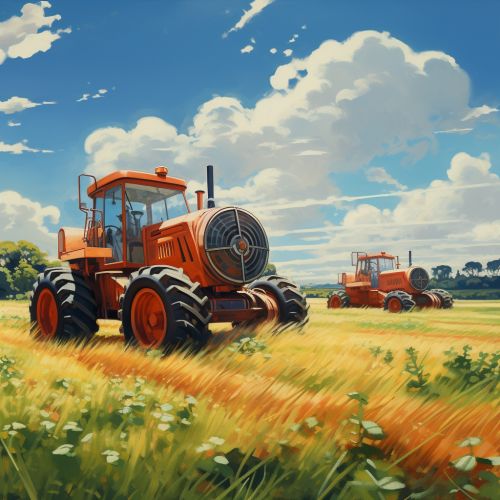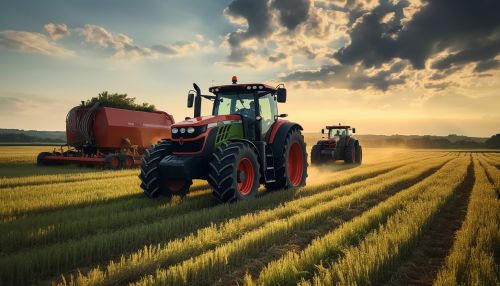Agricultural engineering
Overview
Agricultural engineering is a branch of engineering that deals with the design, construction, and improvement of farming equipment and machinery. It combines the disciplines of mechanical, civil, electrical, and chemical engineering principles with a knowledge of agricultural principles according to technological principles. A key goal of this discipline is to improve the efficacy and sustainability of agricultural practices.
History
The history of agricultural engineering dates back to the use of simple tools by early humans. However, the field as a recognized discipline began during the 19th century with the advent of the industrial revolution. The first agricultural engineering department was established at Iowa State University in 1905. Since then, the field has evolved to incorporate more sophisticated technology and a broader understanding of biological resources.
Scope and Applications
Agricultural engineering encompasses several areas of specialization, including the design and improvement of farm machinery, the planning and management of agricultural facilities, soil management, and the processing and storage of agricultural products.


Farm Machinery and Equipment
Farm machinery and equipment are a primary focus of agricultural engineering. This includes the design and optimization of equipment for planting, harvesting, and processing crops, as well as equipment for the care and management of livestock.
Agricultural Structures and Environment
Agricultural structures and environment is a sub-discipline of agricultural engineering that focuses on the design and construction of farm structures and environment control. This includes the design of animal shelters and machinery storage, as well as the control of temperature, humidity, and air quality in these structures.
Soil and Water Conservation
Soil and water conservation is another important aspect of agricultural engineering. This involves the study of soil properties, soil management, and the design of irrigation systems. This field also covers drainage and flood control, as well as the management of water resources for agricultural use.
Agricultural Processing and Storage
Agricultural processing and storage involves the post-harvest handling of crops and livestock products. This includes the design of processing equipment, the study of preservation techniques, and the planning of storage facilities.
Bioresource Engineering
Bioresource engineering is a newer area of agricultural engineering that deals with issues related to biological resources. This includes the production of biofuels, the management of waste products, and the development of sustainable farming practices.
Education and Career
Agricultural engineers typically need a bachelor's degree in agricultural engineering or a related field. Some jobs may require a degree in a specific area of agricultural engineering, such as bioresource engineering. Many agricultural engineers choose to become licensed, which generally requires a degree from an accredited engineering program, a passing score on the Fundamentals of Engineering (FE) exam, relevant work experience, and a passing score on the Professional Engineering (PE) exam.
